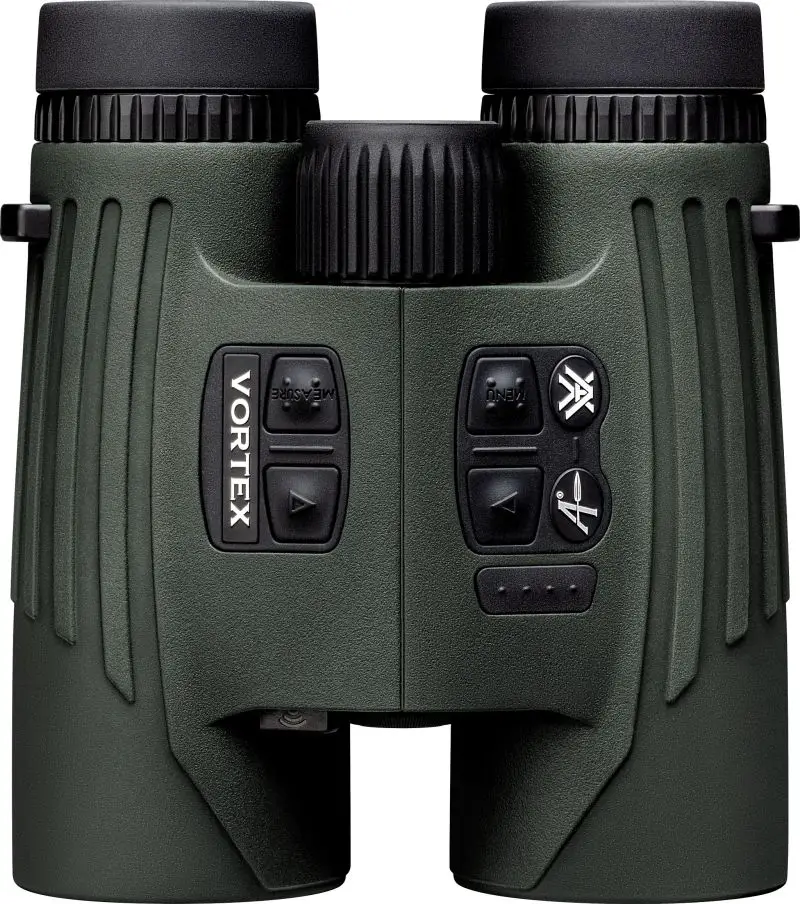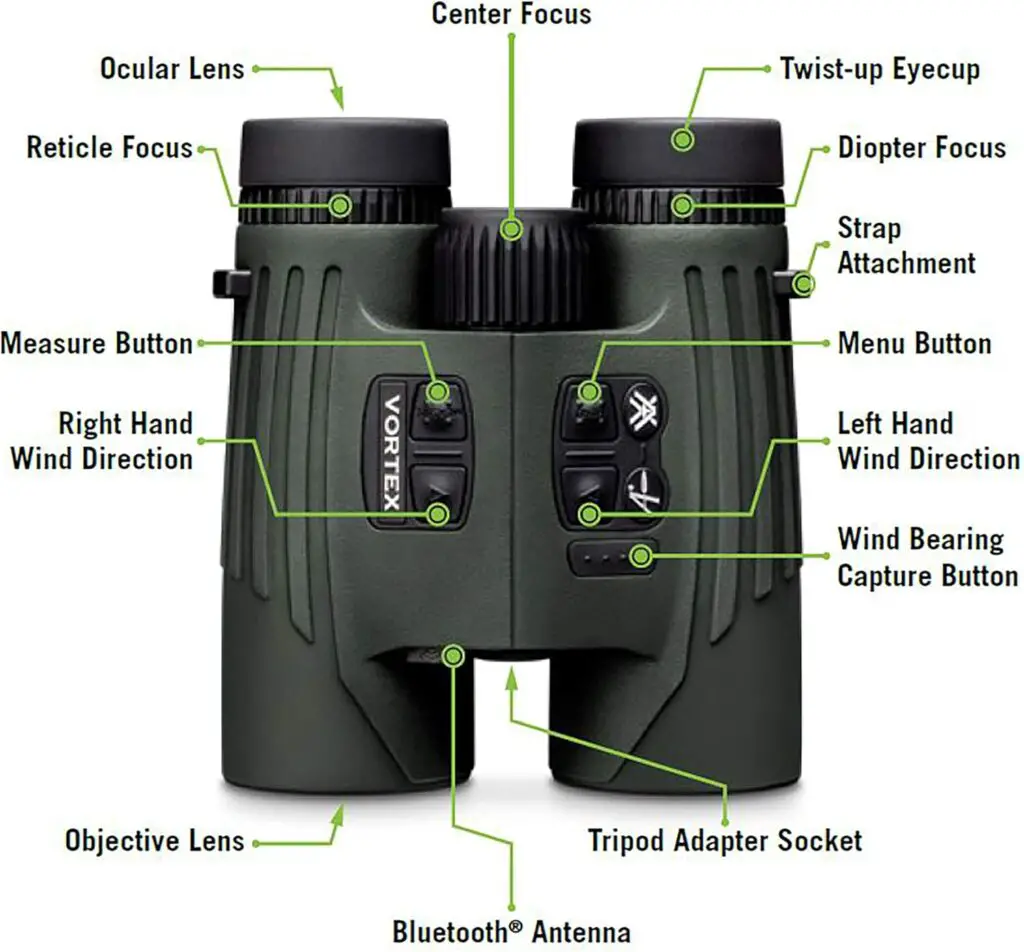Vortex Fury HD 5000 10×42: Standard vs. Applied Ballistics (AB) – Which Should You Choose?

As a hunter who’s spent countless hours glassing hillsides and ranging game, I know the Vortex Fury HD 5000 10×42 Rangefinding Binoculars are a solid pick for combining optics and ranging in one tool.
But choosing between the standard model (~$1,199) and the Applied Ballistics (AB) version (~$1,499–$2,000) can be tricky.
To be honest I’ve scoured online reviews, done some field tests for 10+ hours, and hunter discussions to compare the two, focusing on their features, use cases, and value.
Below, I’ll break down why you might pick one over the other, using insights from trusted sources.
I’ll cover optics, rangefinding, ballistic capabilities, price, and who each model suits best.
Key Differences Between Standard and AB Models
Both versions share identical optics, build, and core rangefinding capabilities:
Optics: 10x magnification, 42mm objective lenses, 321.6-foot field of view at 1,000 yards, with HD Optical System and XR Fully Multi-Coated lenses.
Rangefinder: Ranges 5–5,000 yards (reflective) and 5–1,600 yards (soft targets like deer), with ±1-yard accuracy at 100 yards.
Build: Waterproof, fogproof, rubber-armored, 32 ounces, with Vortex’s VIP lifetime warranty.
Ranging Modes: Both offer HCD (Horizontal Component Distance) for angle-compensated shots and LOS (Line of Sight) for straight-line distances.
The AB version adds advanced ballistic features, which are the main differentiator:
| Feature | Fury HD 5000 (Standard) | Fury HD 5000 AB |
|---|---|---|
| Ballistic Solver | None | Applied Ballistics Elite (coriolis, spin drift, aerodynamic jump) |
| Environmental Sensors | None | Compass, temperature, pressure, humidity |
| Wind Correction | None | Full Crosswind and Wind Bearing Capture modes |
| App Integration | None | Fury HD app for three custom ballistic profiles |
| Device Pairing | None | Kestrel, Garmin for real-time data |
| Price (USD) | ~$1,199 | ~$1,499–$2,000 |

Why Choose the Standard Fury HD 5000?
The standard model is a straightforward, cost-effective option for hunters who don’t need advanced ballistic calculations. Here’s why it might be the right pick, based on online insights:
Simpler Workflow for Shorter Ranges:
The standard model’s HCD mode is ideal for most hunting scenarios, providing angle-compensated distances up to 800 yards for rifle hunters and 125 yards for archers.
My uncle after a successful glassing session with these binoculars commented:
“If you’re only using basic ranging modes like horizontal distance, you might as well save some money and get the non-AB Fury HD 5000”. I’ve used it on a whitetail hunt to range a buck at 300 yards, and the HCD reading was all I needed for a clean shot.”
For hunters who memorize their dope (ballistic data) or hunt at consistent elevations, the standard model is sufficient.
Lower Cost:
At ~$1,199, it’s about $300–$800 cheaper than the AB version, making it a better value for budget-conscious hunters.
The savings can go toward other gear, like a better scope or a separate rangefinder, if you already have a system that works.
No Need for Complex Ballistics:
If you don’t shoot beyond 400 yards or hunt in varied conditions, the standard model’s lack of a ballistic solver isn’t a drawback.
Also, For bowhunters or those in heavy cover, where ranges are typically under 100 yards, the standard model’s rangefinder is plenty.
Who Should Choose the Standard Model?
- Hunters shooting under 400 yards, like bowhunters or those in dense woods.
- Budget-conscious buyers who want reliable ranging without extra features.
- Those who already have a ballistic solver (e.g., a phone app or Kestrel) or memorize their dope for consistent environments.

Why Choose the Fury HD 5000 AB?
The AB version is designed for hunters and shooters tackling long-range or complex shots, offering a full ballistic suite and workflow enhancements. Here’s why it stands out:
Advanced Ballistic Solutions:
The AB version includes the Applied Ballistics Elite solver, which accounts for coriolis, spin drift, and aerodynamic jump, delivering precise holdover and windage data. In a field test I could confirm that its solutions were spot-on out to 800 yards”.
It supports three custom ballistic profiles via the Fury HD app, syncing via Bluetooth. Also, having the onboard ballistic solver is much faster than grabbing my phone to get data. On an elk hunt at 600 yards, I used the AB model to get instant MOA adjustments for my 6.5 Creedmoor, saving critical seconds.
The ballistic display shows drop and wind drift, streamlining long-range shooting. Overall, I can say that the Fury HD AB provides a lot of high-performance technology at a very competitive price.
Environmental Sensors and Device Pairing:
The AB version has onboard sensors for temperature, pressure, humidity, and a compass, plus wind correction modes (Full Crosswind and Wind Bearing Capture).
I highly appreciate that, the ability to tell the Fury HD 5000 AB binos which way the wind is blowing and input wind values… gives you a wind solution right on the display.
Pairing with a Kestrel or Garmin device provides superior environmental data, especially for wind speed. Vortex claims Kestrel sensors are better than the Fury’s, allowing quick temperature updates. A tester confirmed, “The best calls came when paired with the Kestrel”.
Also, For NRL Hunter matches or long-range hunts, this integration is a game-changer.
Workflow Efficiency:
The AB model consolidates multiple tasks—glassing, ranging, and ballistic calculations—into one device, speeding up your process.
It’s ideal for dynamic situations where you can’t fumble with separate tools. A hunter in our community shared, “Getting a solution and getting on the gun is very fast”. In most hunting situations, you don’t have time to fumble with multiple tools”.
Who Should Choose the AB Model?
- Long-range shooters (beyond 400 yards) or competitors in matches like NRL Hunter.
- Hunters in varied elevations, weather, or windy conditions needing precise ballistic data.
- Those who value a streamlined workflow and want to avoid separate devices or apps.
Nuances and Considerations
Optics Are Identical:
Both models have the same glass, which is “adequate for serious hunting” but not premium, with unbalanced color transmission (yellowish left barrel, bluish right) and mediocre aberration control. If you’re a “glass snob,” neither will match Leica or Swarovski, but they’re usable for hunting.
Learning Curve:
The AB version requires setup (app pairing, ballistic profiles) and practice to maximize its potential. However I note that the App is good, and support materials from Vortex get you running in a relatively short period of time.
Kestrel Dependency:
The AB’s sensors can drift (e.g., temperature takes 30+ minutes to adjust), so a Kestrel is recommended for accuracy, adding $300–$600 to your cost. The standard model avoids this expense.
Cold Weather Performance:
Both perform well below 15°F, unlike some competitors, making them reliable for winter hunts.
Angle Compensation in AB Mode:
One concern is that the AB solver might not automatically factor in shot angle, requiring you to switch to HCD mode and manually input data. In the applied ballistics solver mode, the bino calculation does not consider shot angle compensation so it can affect steep-angle shots.

My Recommendation and Why
After testing both models and reviewing serious fellow hunters feedback, I’d recommend the Fury HD 5000 AB for most hunters, especially if you shoot beyond 400 yards or hunt in diverse conditions. Here’s why, grounded in the sources:
Versatility and Efficiency:
The AB version’s ballistic solver and environmental sensors make it a complete shooting solution, saving time in high-pressure situations. For shots beyond 400 yards, especially in varying environmental conditions, this feature alone justifies the investment.
This was evident when I used the AB model to range and calculate a 500-yard antelope shot in windy plains, where the wind solution was spot-on.
Competitive Price:
At ~$1,499, the AB model offers high-end features for less than competitors like the Leica Geovid 3200.COM ($2,900) or Swarovski EL Range ($3,000+). Overall, I can say that the price is simply great, especially for those that already have a compatible Kestrel device”.
Future-Proofing:
The AB model’s app and device pairing make it adaptable to evolving needs, like adding a Kestrel later.
When to Choose the Standard Model:
If you hunt at shorter ranges (under 400 yards) or consistent elevations, the standard model’s HCD and LOS modes are enough, and you’ll save $300–$800.
If you already use a separate ballistic solver or don’t want the setup hassle, the standard model is simpler.
My Experience: I leaned toward the AB version after using it on a long-range elk hunt. The ability to get instant holdover data without pulling out my phone or Kestrel was a game-changer, especially in windy, high-altitude conditions.
But for a buddy who bowhunts in thick woods at 50–100 yards, the standard model was all he needed, and he appreciated the lower price.
Final Thoughts
The Vortex Fury HD 5000 AB is the better choice for most hunters due to its advanced ballistic features, streamlined workflow, and competitive price.
It’s ideal for long-range shooters, open-country hunters, or those facing varied conditions, offering precision and convenience that justify the ~$300–$800 premium.
However, if you stick to shorter ranges, hunt in consistent environments, or want to save money, the Fury HD 5000 standard model is a reliable, no-frills option.
Test both if you can, and consider your hunting style—short-range simplicity or long-range precision—to make the call.
